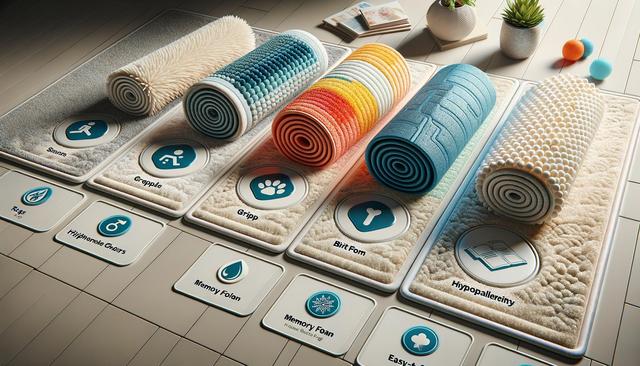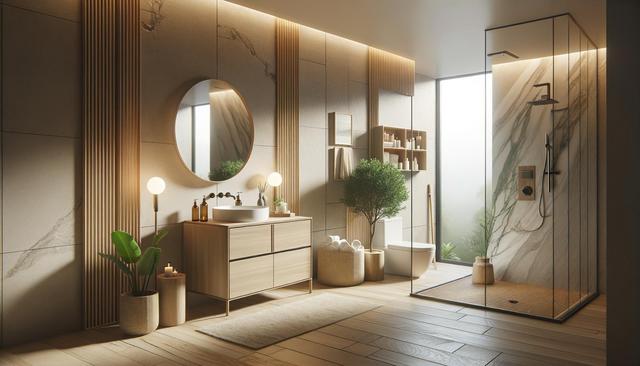Low-Pile Rugs for Reduced Tripping Hazards
One of the most important trends in home carpet flooring for senior residences is the shift toward low-pile rugs. These rugs offer a flatter, denser surface that minimizes the risk of tripping—especially for those using mobility aids like walkers or canes. Unlike high-pile or shag rugs that can tangle with footwear or wheels, low-pile options sit snugly against the floor, offering a smooth and even walking surface.
Low-pile rugs are also easier to maintain, reducing the effort needed for cleaning. This is particularly beneficial for seniors or caregivers who may have limited mobility themselves. Additionally, many low-pile rugs now come with anti-slip backings, eliminating the need for separate rug pads and providing extra stability. Some key advantages include:
- Minimized tripping risks
- Ease of vacuuming and cleaning
- Compatibility with mobility devices
- Available with built-in non-slip features
This trend supports not only safety but also convenience, making it a practical choice for aging in place.
Non-Slip Backings for Enhanced Grip
Slippery flooring is a common concern in senior homes, particularly in areas like kitchens and bathrooms. The rise of rugs with non-slip backings helps address this issue head-on. These rugs are designed with materials that grip the floor surface, preventing them from sliding out of place even underfoot pressure or movement.
What makes this trend even more appealing is the integration of stylish designs with functionality. No longer limited to plain or utilitarian aesthetics, non-slip rugs now come in a variety of colors, patterns, and textures that can match any interior. This allows seniors to enjoy both visual appeal and peace of mind. Consider looking for rugs with:
- Rubber or latex backing
- Textured undersides for better traction
- Machine-washable materials for easy maintenance
The use of non-slip rugs is especially effective in high-traffic areas, helping to create safer pathways throughout the home without sacrificing style.
Soft and Cushioned Textures for Comfort and Protection
Comfort is a top priority in senior living spaces, and rugs with soft, cushioned textures are increasingly popular for good reason. These rugs not only add a cozy touch underfoot but also provide a layer of protection in the event of a fall. A cushioned rug can help absorb impact, reducing the potential for injury.
Many of today’s rugs are made from memory foam or dense woven fibers that offer both support and softness. These materials are particularly helpful in areas where seniors may spend a lot of time standing, such as in front of the kitchen sink or bathroom mirror. Features to look for include:
- Memory foam padding for enhanced comfort
- High-density fiber construction for durability
- Hypoallergenic materials to reduce irritants
By combining safety with tactile comfort, these rugs help create a more pleasant living environment catered to senior needs.
Neutral and Calming Color Palettes
Visual perception can change with age, making color choices an important factor in home design for seniors. Recent rug trends highlight the use of neutral and calming palettes—colors like soft grays, beiges, light blues, and pastel greens. These tones help reduce visual clutter and create a more relaxing atmosphere, which is especially beneficial in promoting mental well-being.
In addition to their aesthetic appeal, lighter colors can improve visibility in low-light conditions, helping to reduce missteps. Coordinating rugs with wall and furniture tones also enhances spatial awareness, which is helpful for individuals with cognitive impairments. Benefits of using calming color schemes include:
- Improved visibility and contrast
- Reduced visual stress
- A cohesive and tranquil home environment
This trend proves that safety features can coexist with tasteful design, making it easier to create homes that are both secure and stylish.
Area Rugs for Defined, Safer Zones
Open-concept living spaces are popular, but they can sometimes lack clear boundaries. Area rugs are being used more frequently in senior homes to define specific zones—such as sitting areas, dining spaces, or reading nooks—without the need for permanent architectural changes. This helps guide movement and reduces confusion, especially for seniors with memory or vision challenges.
By placing area rugs strategically, caregivers and seniors can create visual cues that support better navigation and orientation within the home. This approach also adds a layer of physical comfort and warmth to specific parts of the house. Key advantages include:
- Enhanced wayfinding and orientation
- Defined spaces without structural renovations
- Ability to layer style and function
Area rugs serve both decorative and practical purposes, making them a smart and adaptable choice for enhancing senior home safety.
Conclusion: Style Meets Safety in Senior Living
These five rug trends demonstrate how thoughtful design can elevate not only the appearance but also the safety of senior homes. From low-pile surfaces and non-slip backings to calming colors and cushioned textures, current rug innovations prioritize the needs of older adults while maintaining a sense of style. Incorporating these elements into home carpet flooring can make a meaningful difference in everyday comfort and mobility. Whether you’re a senior, a caregiver, or a family member planning a living space, these trends offer valuable options to create a secure and welcoming environment.


